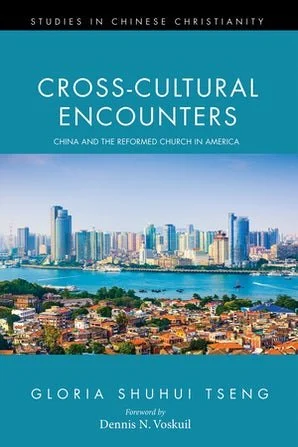Doctors, nurses, teachers, and evangelists, the men and women of the Amoy Mission sowed the seeds of vibrant Christian community in China's Fujian Province. This book tells the stories of those remarkable missionaries whose legacy endures to this day.
Read MoreThe former leader of one of the five largest house church networks in China has penned a story that gripped and moved me greatly. Endorsed by prominent Chinese Christians who know the author, this fast-paced narrative covers the decades from the dark days of the Cultural Revolution, to the continued outreach, even to foreign countries, along with government pressure, of recent years.
Read MoreExploring the history of missionary translation of Christian texts in East Asia, Missionary Translators offers a comparative perspective between the features of East Asian languages and the historical context of the translation.
Read MoreThough this book is not entirely without merit, it suffers from several fundamental flaws that are fatal to its basic thesis. It thus resembles the author’s dissertation, published as Saving God’s Face, which I have evaluated in a long review.
Read MoreJackson Wu, who teaches theology to Chinese pastors, has written an important book that deserves careful consideration by missiologists, those engaged in ministry among Chinese, interpreters of the New Testament, and systematic theologians. He also maintains a lively blog, in which he expands on and clarifies many points in this book (www.Jacksonwu.org).
Read MoreWith this installment, Guizhou: The Precious Province, of the China Chronicles, Paul Hattaway solidifies his position as one of the outstanding scholars of Christianity in China.
Read More“In the twentieth century, for the first time, there was in the world a universal religion – the Christian religion. . . . In country after country . . . it took root, not as a foreign import, but as the Church of the countries in which it dwells,” this author powerfully proclaims. Though the term is not used, this was the period when “World Christianity” fully came into being as the major development in Christian history and, perhaps, of all human history.
Read MoreW.A.P. Martin (1827-1916) was one of the most influential missionaries in China from the 1850s to the early years of the nineteenth century. He called for a “Confucianism and Christianity” approach.
Read MoreA non-Christian scholar with a doctorate in Chinese religions said, “China needs this man, because Christianity still has a foreign flavor to most Chinese people, and Chang is so thoroughly and authentically Chinese; he understands us and can speak to our hearts and our minds.” Clearly, Lit-sen Chang’s burden for a Christianity that would be both faithful to the Scriptures and also fully “Chinese,” is relevant today.
Read MoreIn these chapters, we note the pattern of progression, “conquest,” and then retrogression, as formerly “Christian” nations and peoples were conquered from without or fatally compromised from within.
Read MoreDr. Hancock has presented the reading public with a masterpiece of cultural, intellectual, religious, and cross-cultural history. Just as the announcer on the classical music station will sometimes say, “And now, for our big piece of the day, here is Beethoven’s Ninth Symphony,” so this treatise is long and wide, deep and high, rich and complex, with a vast range of topics and a temporal, conceptual, and imaginative scope that one very seldom finds even in multivolume works.
Read MoreThis one-volume history of Christian missions is, in one sense, comprehensive. Neill’s grandparents and parents had served as missionaries in India, bequeathing to him an insider’s knowledge of missionary life and work, which he augmented by serving in India with the Church Missionary Society for twenty years. His narrative reads like a story rather than a mere chronicle.
Read More












